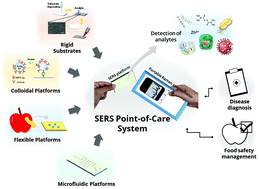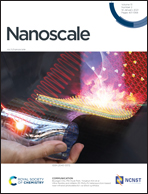Towards a point-of-care SERS sensor for biomedical and agri-food analysis applications: a review of recent advancements
Abstract
The growing demand for reliable and robust methodology in bio-chemical sensing calls for the continuous advancement of sensor technologies. Over the last two decades, surface-enhanced Raman spectroscopy (SERS) has emerged as one of the most promising analytical techniques for sensitive and trace analysis or detection in biomedical and agri-food applications. SERS overcomes the inherent sensitivity limitation associated with Raman spectroscopy, which provides vibrational “fingerprint” spectra of molecules that makes it unique and versatile among other spectroscopy techniques. This paper comprehensively reviews the recent advancements of SERS for biomedical, food and agricultural applications over the last 6 years, and we envision that, in the near future, some of these platforms have the potential to be translated as a point-of-care and rapid sensor for real-life end-user applications. The merits and limitations of various SERS sensor designs are analysed and discussed based on critical features such as sensitivity, specificity, usability, repeatability and reproducibility. We conclude by highlighting the opportunities and challenges in the field while stressing the technological gaps to be addressed in realizing commercially viable point-of-care SERS sensors for practical biomedical and agri-food technological applications.

- This article is part of the themed collections: Celebrating International Women’s Day: Women in Nanoscience, Nanoscale 2022 Lunar New Year Collection, Recent Review Articles and Advances in Plasmonics and Its Applications


 Please wait while we load your content...
Please wait while we load your content...